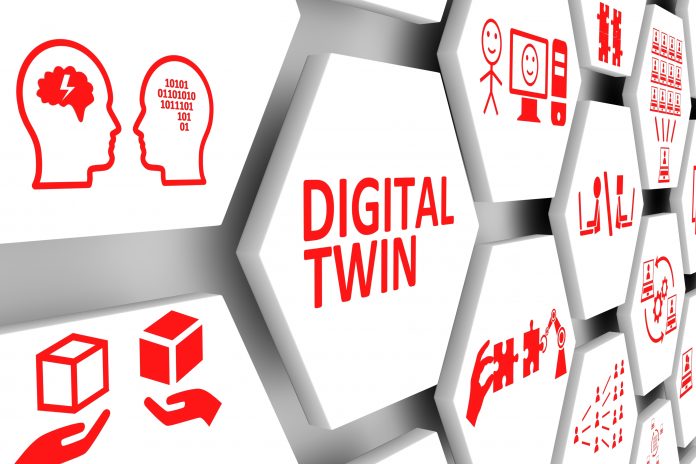Prof Dr Freimut Schliess, Director of Science & Innovation at the Profil Institut für Stoffwechselforschung GmbH, explores if digital twins are game-changers in clinical research and clinical care
Contemporary computation combined with big data enables comprehensive modelling of human metabolism, physiology and behaviour. Advanced computation expands established approaches such as metabolic control analysis (Fell, 1992) and integrated spatial-temporal modelling of metabolic pathways (Schliess et al., 2014). However, possibilities reach far beyond this. Contemporary computation can integrate big amounts of multi-OMICs data resolved over space and time, as well as biomechanical and behavioural information — to name a few — and make use of artificial intelligence (AI)powered data exploitation tools to create digital twins. In short, a digital twin is a virtual replica of a tangible entity. It is the silver bullet towards the modelling of human individuality (Björnsson et al., 2019).
A peek into the future of digital twins
In the medical field, the term digital twin means a multi-scale in silico representation of a person. Digital twins ideally reflect the person’s “state of being” with high levels of granularity of metabolism, physiology, behaviour and morbidity. By making highly resolved digital representations of individuals available, the digital twin concept might enable extremely precise personalised health protection and medical care.
Drug development is a tangible area of application. A panel of thousand drug compounds can be used to virtually treat digital twin copies to predict individual risk-benefit profiles. Predictions could inform clinical trials design, enabling an effective validation of individuals and sub-groups expected to most benefit from specific drug treatment. In this manner, the usage of digital twins could greatly increase the accuracy and cost-effectiveness of clinical development programmes – with a huge impact on both drug quality and costs.
In clinical care, the digital twin model of a patient could be used to better predict his/her disease course and treatment response, for example in integrated personalised diabetes management. This would represent personalised medicine at its best: acknowledging the full array of individual disease trajectories and drug responses and ready to valorise the competitive framework of value-based healthcare.[1] Even digital twins reflecting only partial aspects of a person could considerably increase the predictive power of clinical trial outcomes and promote a shift from reactive towards more preventative healthcare.
In-silico modelling current applications
Clinical trials in diabetes have already successfully used in silico technologies. For instance, ClampArt® — an automated closed-loop metabolic control system — uses an improved clamp algorithm to analyse individual response to blood glucose-lowering drugs in diabetes trials. In-silico optimisation of the algorithm was the first step to obtain an improved clamp algorithm that significantly reduces the amplitude of the oscillations in both blood glucose and glucose infusion rates in pharmacodynamics clamp assessments (Heise et al., 2016). Moreover, in-silico clinical trials evaluating the performance of new anti-diabetic drugs and devices used simulations of persons with Type 1 or Type 2 diabetes (Visentin et al., 2020); Vettoretti et al., 2018; Reiterer et al., 2018).
In-silico modelling is also making precision medicine a reality. Virtual cardiovascular and respiratory systems which incorporate electrical activity, mechanical deformation and fluid mechanics are used for modelling cardio-respiratory safety and efficacy and in surgical interventions. In diabetes care, Automated Insulin Delivery systems such as artificial pancreas use predictive algorithms to adjust a person’s insulin administration based on the continuous capturing of his/her blood glucose and lifestyle features (Schliess et al., 2019).
To that end, RealWorld4Clinic pursues AI-powered realworld monitoring of an individual’s cardiorespiratory health. Here, the goals are to improve the predictive power of clinical trials and create opportunities to earlier diagnose a patient’s heart failure aggravation. Thereby, opening up treatment options and preventing avoidable emergency hospitalisations.
There are many more examples in place, showing the growing acceptance of computational and medical technologies that take advantage of a comprehensive capturing of personal signatures to achieve personalised health and disease management. Nevertheless, the full integration of digital twins in clinical research and clinical care seems still a long way off.
Challenges to full implementation
The molecular and behavioural profiling required for the design of digital twins is not yet standard in clinical research and clinical care. Ethical, legal and social issues related to a personalised definition of health and disease and the fluent transition between therapy, prevention and human enhancement require a thorough societal debate (Bruynseels et al., 2018). Aspects of data ownership of AI-powered exploitation and digital twins (Schliess, 2020) and incentives for citizens to donate his/her digital twins for societally relevant research still need to be addressed.
Despite the current limitations, there is a high chance that digital twins can become a game-changer in clinical research and clinical care. They have considerable potential to greatly improve treatment outcomes while increasing the sustainability of healthcare. The advancement of digital twins will go along with the evolution of new research areas, unravelling a wide array of individual health and disease trajectories and correspondent options for personalised interventions.
Collaborative initiatives such as the EIT Health Knowledge & Innovation Community, the DigiTwins consortium or the LiSyM network can promote cocreation, catalysing the integration of technological advancements. It also enables different stakeholders to jointly address all ethical, legal and social issues of digital twins. Collaboration is key to achieve a widespread introduction of digital twins in clinical research and clinical care.
Acknowledgements
This article is financially supported by EIT Health, a network of best in-class health innovators that collaborates across borders and delivers solutions to enable European citizens to live longer, healthier lives. EIT Health is supported by the EIT, a body of the European Union.
Tatiana Affini Dicenzo support (Manager Science & Innovation at Profil Institute) is greatly acknowledged.
Reference
1 EIT Health, Implementing Value-Based Health Care in Europe: Handbook for Pioneers (Director: Gregory Katz), 2020.











